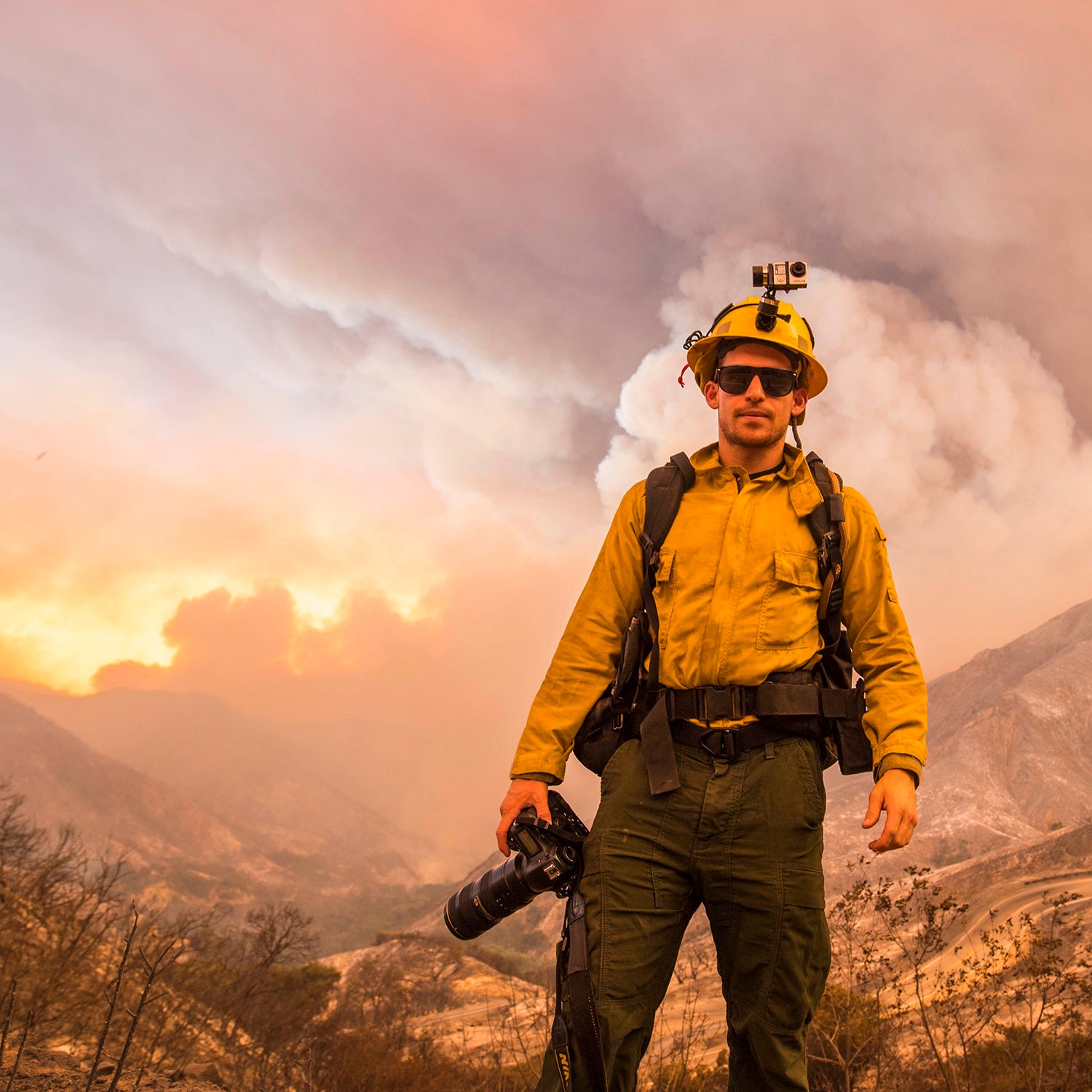By day, works as a contract photographer for the U.S. Forest Service, documenting wildfires and providing those photos to news outlets. By night, he shoots long exposures of those fires for an ongoing art project he’s dubbed Terra Flamma. This is the gear he relies on.
The Camera
It’s a . It’s big and bulky, but Palley says nothing else can match its combination of speed, image quality, and ruggedness. Its photos can be scaled up to 40-by-60-inch art prints, but recently, he’s had demand from collectors for even bigger work, so has had to expand his camera to include a medium format camera.
“That camera isn’t going to get hauled up a fire line,” cautions Palley. “But it will be used for the long exposures at night, portrait work, and slower scenes.”
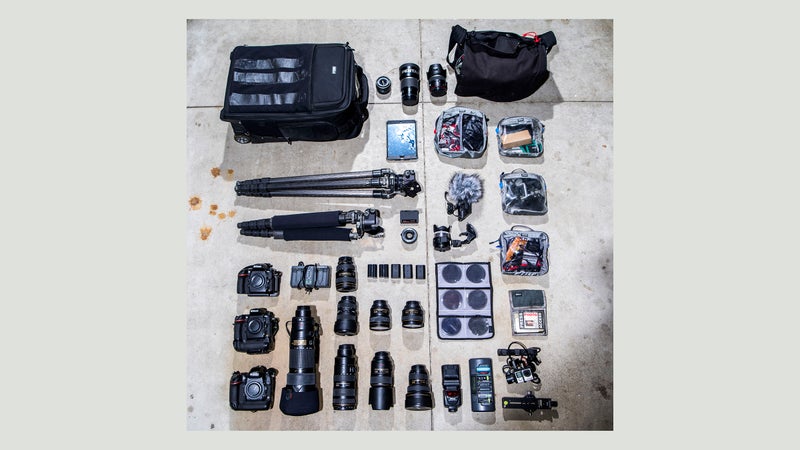
The Lenses
Palley says his go-to is a lens. “It covers a moderate wide angle to decent telephoto, and I can shoot anything from landscape scenes to decent portraits with it,” he says. Thanks to its versatility, Palley can leave it attached to the Nikon body most of the time he’s in the field, which helps him keep the incredibly abrasive ash off his sensor. “Its built-in image stabilization means I can handhold the camera in marginal light and still get useable images for press,” Palley says.
When he’s in a rush at night, Palley uses a . The massive glass of the ultra-wide-angle lens gathers a huge amount of light, meaning he can grab long exposures of the Milky Way over a fire, in less time. That’s crucial when multi-minute exposures could risk his life.
When he needs to shoot firefighting aircraft, Palley reaches for the telephoto lens. But he also has a 25-year-old Nikon 70-210 AF lens he found on eBay for $50, which is more compact. And, because he got it so cheap, he then doesn’t have to worry so much about dropping it off a cliff during a rushed lens swap.
On the Phase One, Palley runs a leaf shutter. “It’s stupid sharp and allows me to use a high-speed flash sync even on sunny days,” he says.
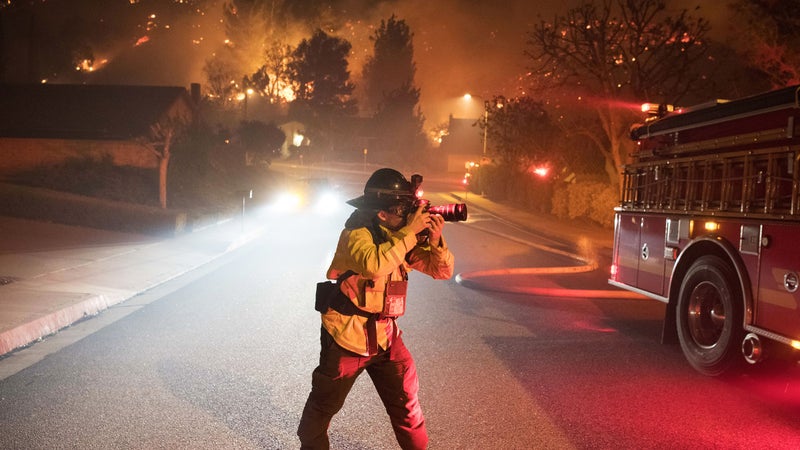
Maintenance and Repair
Palley says he’s tried using all manner of camera covers and pouches to protect his equipment, but has found that it all gets in the way to such a degree that he’s stopped bothering. So all that’s protecting his equipment from smoke, ash, embers, water, flame retardant, extreme heat and falls is the standard weather sealing, plus a UV filter on his lenses.
“I’ve learned to accept that the equipment will be damaged,” he says. Palley carries professional insurance on all this stuff, but even with that, his annual repair bill is still around $2,000. Nikon offered to repair damage to its cameras and lenses to any photographer covering the devastating wildfires that ravaged California last November—a courtesy that saved Palley $1,600. “I keep repair receipts on my desk to remind me of the high cost of producing these images anytime someone asks to use my work for free,” he says.
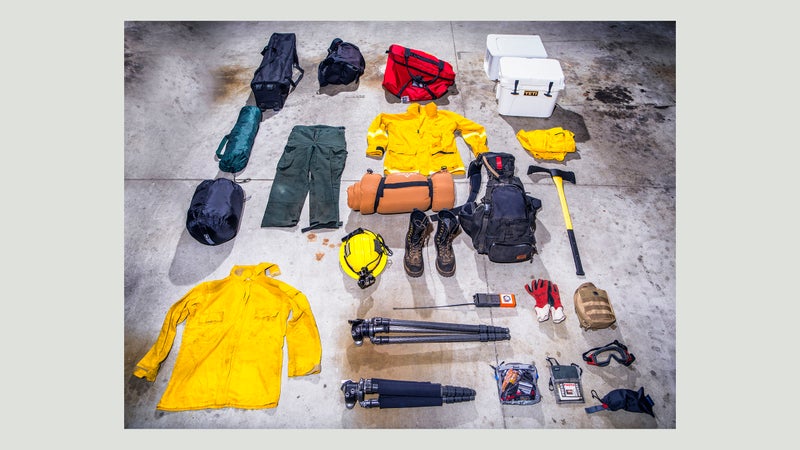
Two Crucial Extras
In addition to his camera gear, Palley says two additional pieces of equipment are crucial to his work: a good tripod and his iPhone.
“Trying to fiddle with a rickety pick of crap in the middle of a firestorm is distracting and not fun,” he says. “Worrying about your $5,000 camera setup falling over in 60 mile-per-hour winds is not safe. You need to be free to stay aware of what the fire is doing.” He relies on carbon fiber tripods from and , which are easy to haul around yet peerlessly stable.
He uses an to shoot color references for the photos he takes on his real cameras. Apparently, its lens and software is capable of accurately reproducing the weird gamut of colors produced by wildfires, enabling him to fix the “squirrelly” white balance and colors his Nikon sometimes kicks out. If he needs to get images out fast, he’ll also sync the iPhone with his camera via Bluetooth or WiFi, and send them to his editors over a cell network.
Safety
Palley wears and carries the same personal protective equipment any wildland firefighter would. That includes flame-resistant Nomex clothing, a helmet, and eye protection. He also went through the same formal wildland-fire training the firefighters get, enabling him to safely communicate with them, read the fire, and respond to emergencies without becoming a burden.
Palley also carries a , which “should never have to come out, but in this age of climate-change-worsened, extreme fire behavior, anything is possible.”
He wears a pair of $500, handmade that have rubber soles that are both stitched and screwed to the heavy leather uppers. “That way, the soles won’t fall off even if you’re walking around in hot ash and they start to melt,” he says.
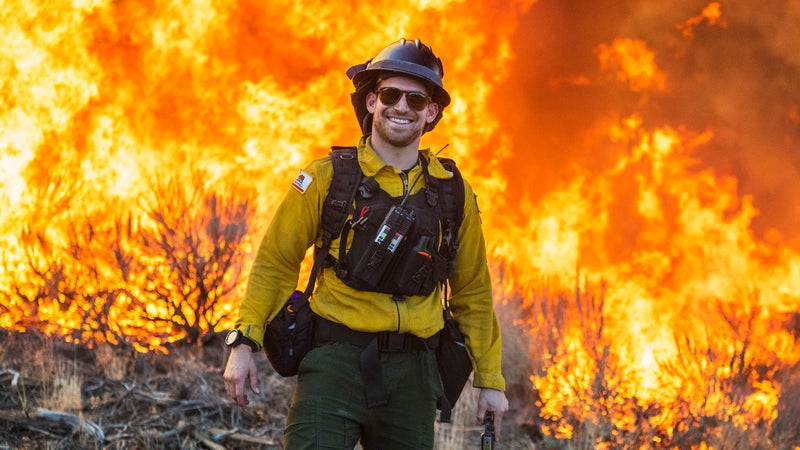
How You Can (Carefully) Shoot Wildfires, Too
“Get a good telephoto lens and a tripod, and shoot wildfires at a safe distance, well away from emergency workers,” Palley says. “Some the best images I’ve taken or seen are shot five to 10 miles away from the actual blaze, from an opposing hillside or mountaintop. There, you can get cool long exposures and show the fire in its geographic context.”


